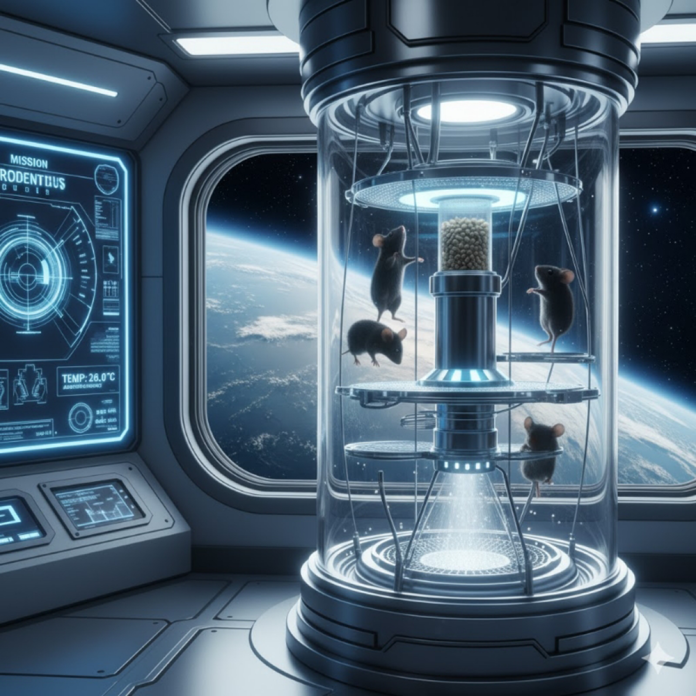Newly released footage from China’s space station shows four mice living alongside the Shenzhou-21 astronaut crew, providing a rare look at how small mammals adapt to microgravity during long-duration missions.
The video captures astronauts unpacking the animals from a specialized transport container, installing their experimental habitat, and connecting it to the station’s power supply. Once activated, the device maintained a stable internal temperature of about 26°C, creating suitable conditions for the rodents.
The mice appeared alert and well-adapted. In the footage, they were seen resting inside small shelter nests, climbing along the cage walls, and feeding normally after quickly locating their food. Researchers say such behaviors indicate early signs of healthy adjustment to the orbital environment.
To maintain hygiene inside the habitat, a directional airflow system was activated after installation. The system blows floating fur, feces, and debris toward a sticky surface at the bottom of the module, preventing waste from drifting inside the station’s cabin.
According to Huang Kun from the Technology and Engineering Center for Space Utilization under the Chinese Academy of Sciences, mice are widely used as model animals in space research due to their genetic similarity to humans, small size, and rapid reproductive cycle. These characteristics make them valuable for studying physiological changes, growth, development, and disease processes in microgravity.
Before being selected for the mission, the mice underwent a series of screening tests to assess physical endurance, resistance to motion sickness, and behavioral stability. The evaluations included staying on a rotating rod to test strength and coordination, exposure to multi-directional spinning to mimic space motion sickness, and maze tasks to assess spatial adaptation.
Researchers say the experiment will help expand understanding of how mammals respond to extended periods in space—knowledge essential for future human deep-space missions.


